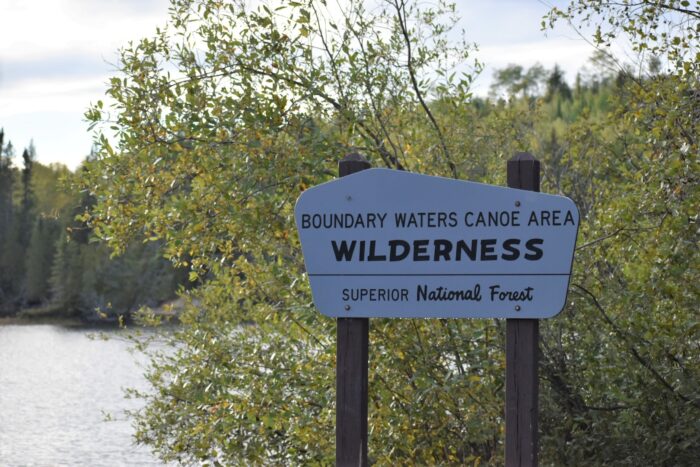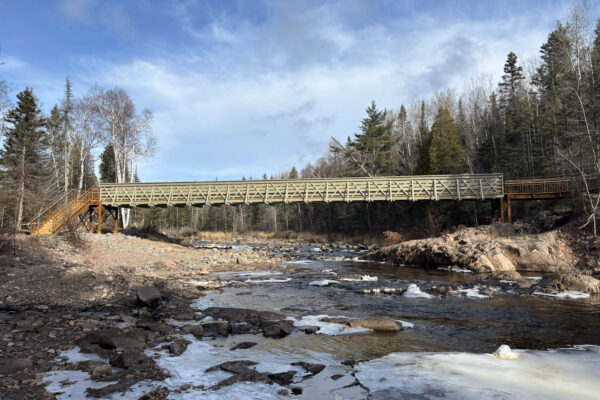New administration reignites legislative battle over the Boundary Waters
The second Trump Administration has begun the next phase in an ongoing battle at the federal and state levels over the future of mining in the Boundary Waters Canoe Area Wilderness. The issue is unfolding through competing executive orders, bills, and lawsuits.
While the debate can polarize people along differing sides of the political aisle, the issue ultimately comes down to a question of science and risk, as the value of a copper deposit in the Boundary Waters Watershed is weighed against the risk of compromising a vital source of freshwater.
Environmental Concerns
Twin Metals and its supporters have emphasized an environmentally friendly approach to their mining operation. They believe that their operation will have a limited impact on the environment and highlight that the proposed mine would not be an open-pit mine, but a fully underground mine.
“With Twin Metals being an underground mine, the amount of water that needs to be managed is a much smaller quantity than people may recognize. Most of the water for groundwater is going to be found in the top 300 feet, underneath the surface,” Julie Lucas, executive director of the industrial trade organization, Mining Minnesota, told WTIP. “And Twin Metals, their main operations start at 400 feet, as proposed, and starting at those levels, you do not have much groundwater coming in.”
Save the Boundary Waters cites multiple studies available on their website, stating that no technology could prevent a sulfide-ore copper mine from polluting surrounding groundwater and surface water in the Boundary Waters Wilderness.
”When you bring that type of rock, sulfide bearing ore, to the surface, there’s a chemical reaction spurred on by the exposure to air and water that generates something that’s akin to battery acid,” Ingrid Lyons, executive director of Save the Boundary Waters, told WTIP, “and it leeches out the other trace heavy metals within the rock, and leeches those out into surrounding waterways.”
Any accident could have a ripple effect. The interconnected streams, wetlands, and lakes in the Boundary Waters mean that any pollutants from mining cannot be controlled.
Furthermore, the Boundary Waters represent an increasingly rare resource: extremely high-quality water. The introduction of any contaminants to the water would immediately degrade the quality of the water in question.
“Truly, nowhere has [sulfide-ore copper mining] been done without some form of pollution to the surrounding site,” Lyons said.
Economic Impact
While the debate over the environmental impact of copper mining near the Boundary Waters continues, there are also economic issues to consider.
“The economics are a benefit,” Lucas said. “It’s 700-plus jobs. It’s the construction jobs that go into it. It’s the spin-off jobs, it’s the taxes.”
According to its website, Twin Metals states that its mining operation will create more than 750 direct full-time jobs and generate approximately 1,500 spin-off jobs in the communities of northeastern Minnesota. Not only will the mines create jobs, but these jobs will also offer higher wages than those in the tourism industry.
The question is whether the boom economy of the mine would be followed by a bust once the resources are extracted and the mine is no longer necessary.
“There’s been a lot of studies that actually compare the economic outcomes more specifically for the Arrowhead region,” Lyons said. “And in the vast majority of scenarios run, the outcome, both in terms of hundreds of millions of dollars in revenue generated and thousands of jobs generated and sustained, is the wilderness-based economy.”
The economic impact extends beyond northeastern Minnesota. Copper may become a growing need as technology advances and the world transitions toward a greener economy.
“Antofogast, who is the Chilean mining conglomerate that oversees Twin Metals, sends its materials to low-cost smelters in China,” Amanda Hefner of Save the Boundary Waters told WTIP. “So, there currently is no guarantee that any minerals that were to come out of the ground in a Twin Metals mine would even benefit the US, because the US would have to buy them back on the global market.”
The Future of the Boundary Waters and Twin Metals
Currently, the 20-year moratorium on mining in the Boundary Waters Watershed remains in place. Twin Metals awaits a decision on its leases. The numerous bills haven’t moved forward. Trump’s executive order hasn’t activated any projects.
However, the situation can change quickly.
“I would say that the threat to the Boundary Waters is very real,” Hefner said.
WTIP conducted multiple interviews with people on both sides of the issue. Find the audio of those interviews and more information on the issue below.














